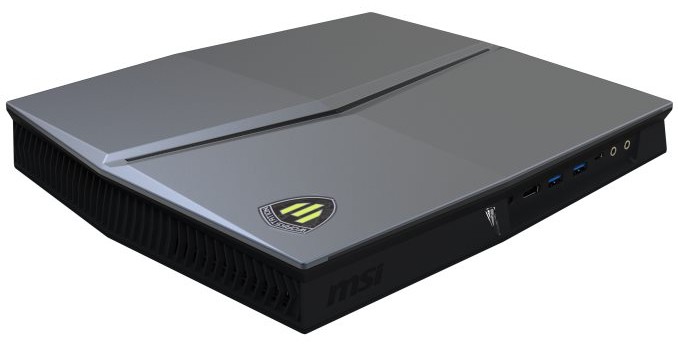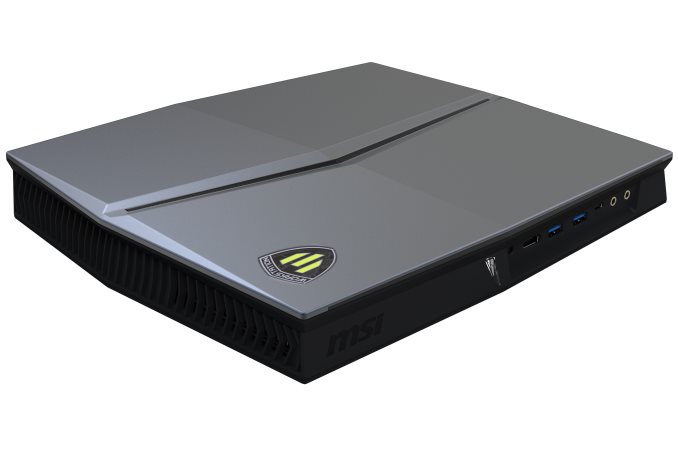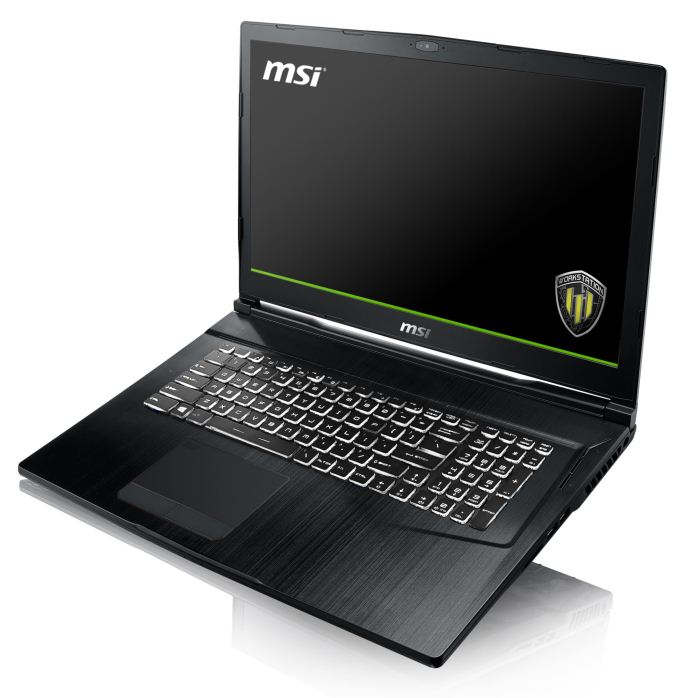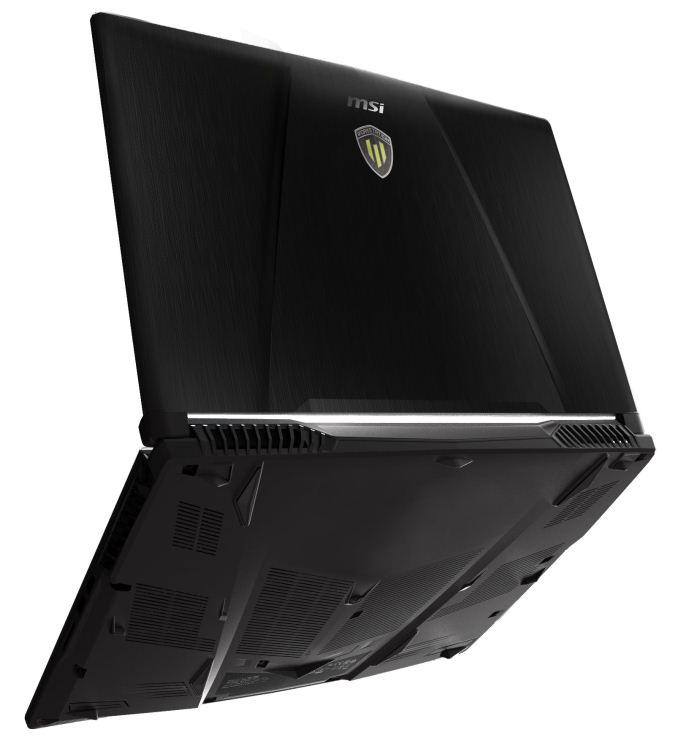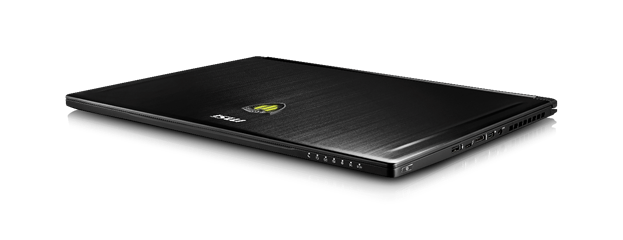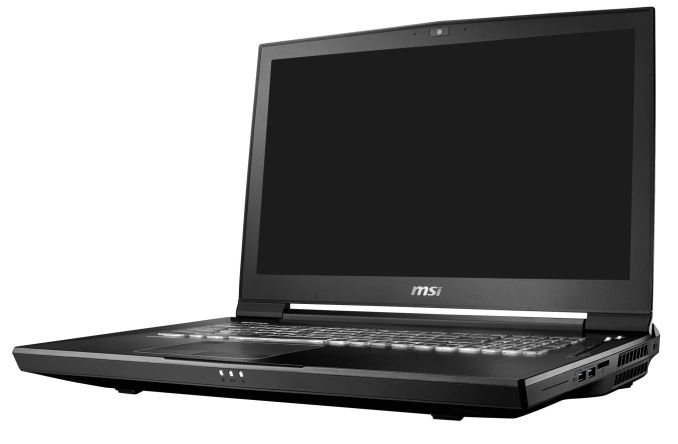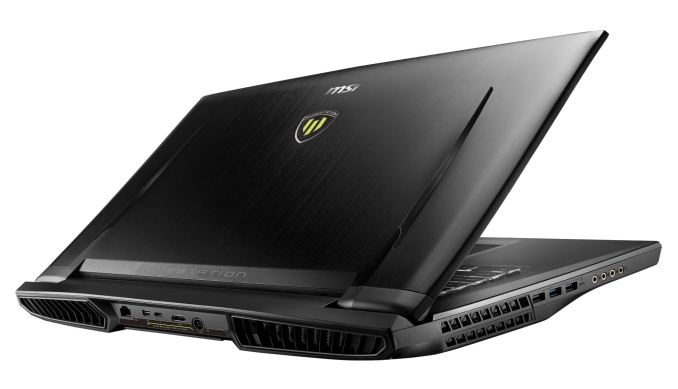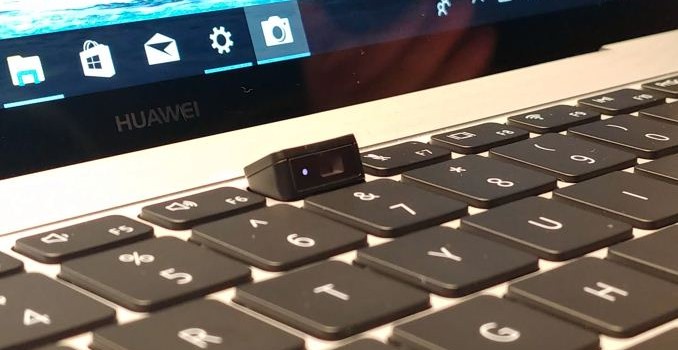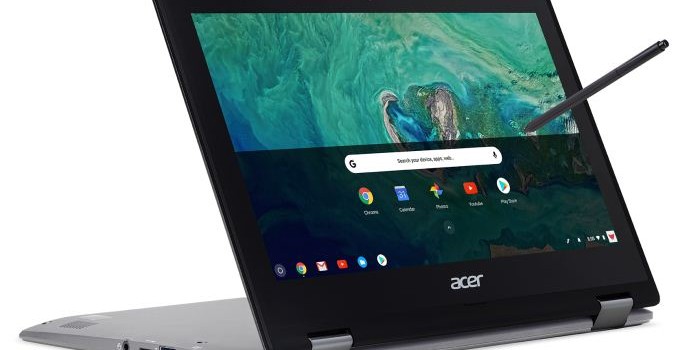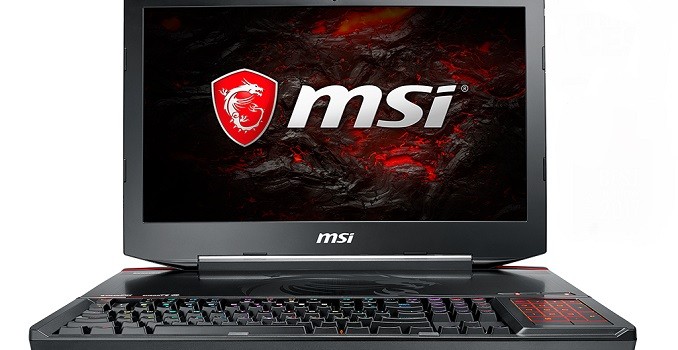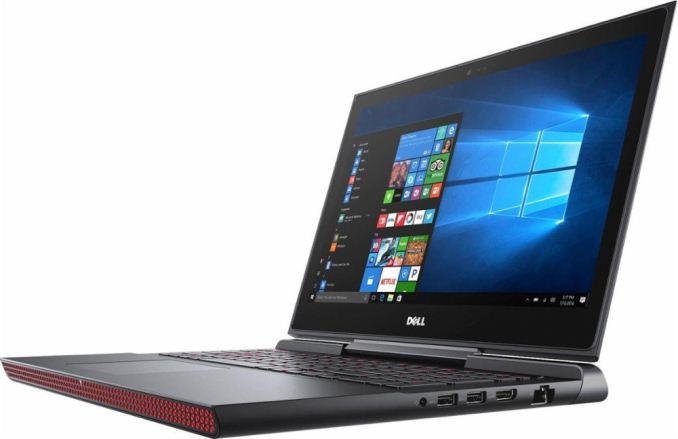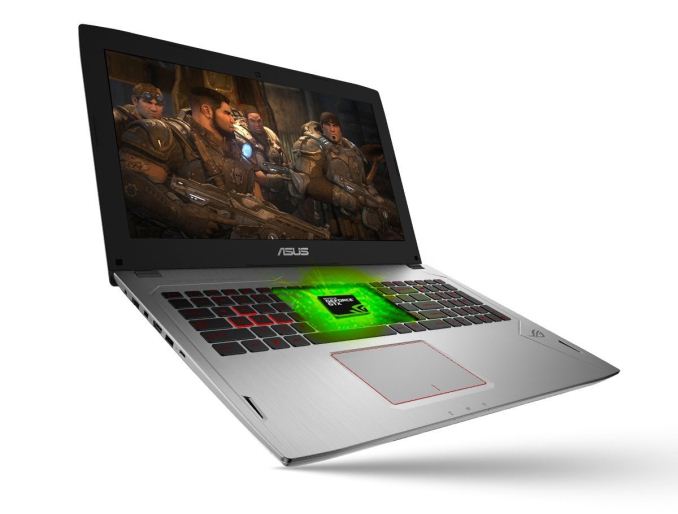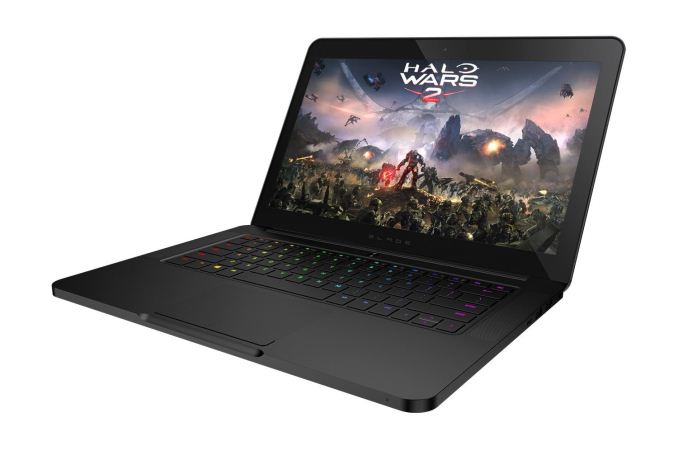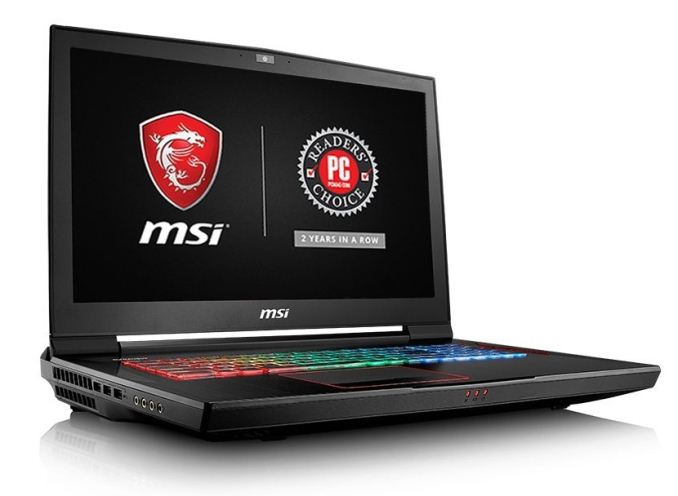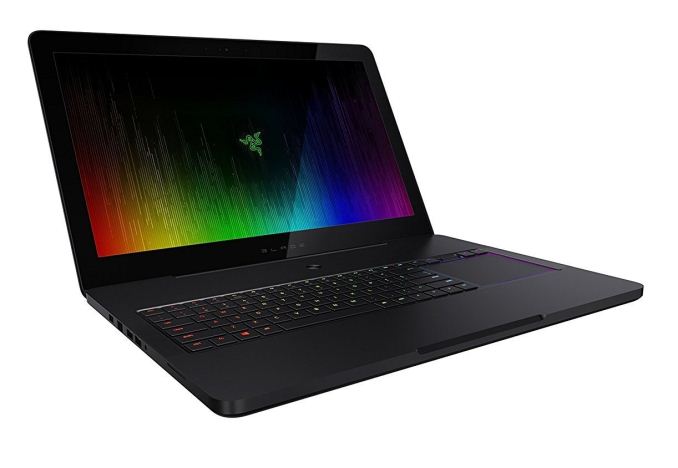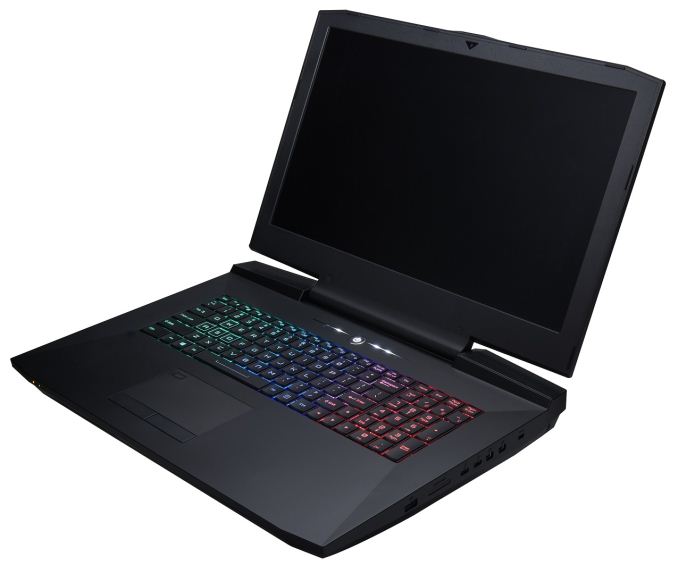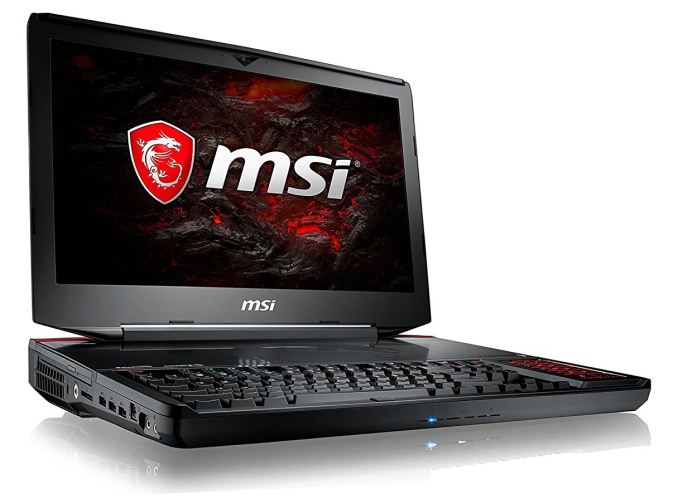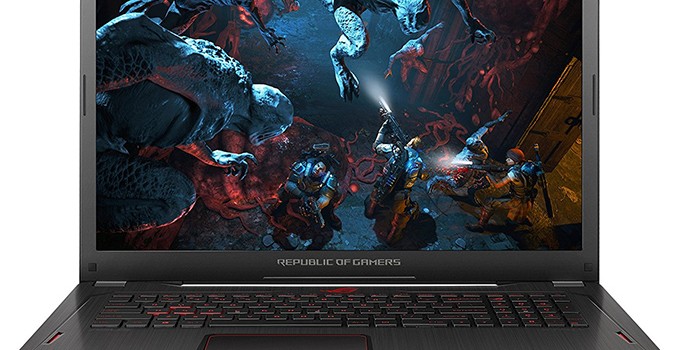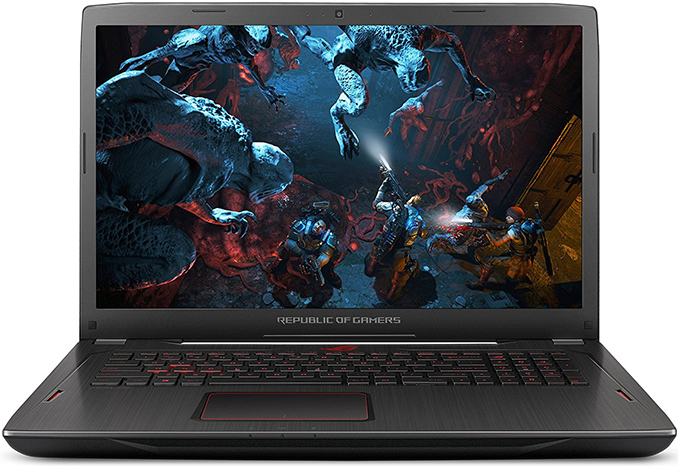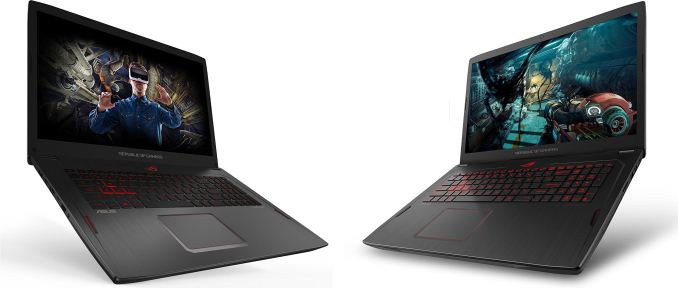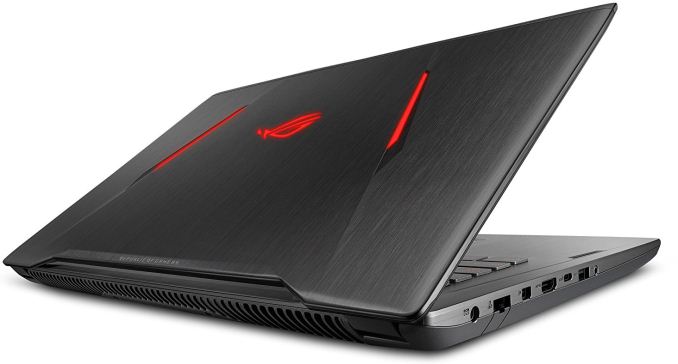MSI Unveils New Vortex Desktop Workstation and Updated Mobile Workstations
MSI has announced updates to its mobile workstation lineup infusing them with Coffee Lake CPUs and Quadro based graphics cards as well as introducing a new pint-sized (Liter size, 2.5L to be exact) desktop named the Vortex W25. The Vortex W25 is based off the Vortex PC G25 desktop using the same chassis but with different lighting schemes externally and different hardware internally to set it apart from its gaming DNA.
Vortex W25
The Vortex W25 will use one of the latest Intel 8th Generation Core processors in the i7-8700. This 6C/12T processor will run up to 4.6 GHz maximum turbo frequency on a base of 3.2 GHz. Xeon CPUs are not offered and with that ECC memory support is non-existent. The unit is kept cool by MSI’s Cooler Boost Titan thermal solution with copper heatpipes and multiple fans to remove the heat from the system. The Z370 based motherboard inside has four SO-DIMM slots supporting up to 64GB DDR4-2400 memory as well as two M.2 slots supporting both NVMe or SATA based devices. There is a 2.5-inch hard drive bay for additional mass storage.
The W25 has three video card options, all NVIDIA Quadro based cards. There are three options, P3200, P4200, and the P5200. The P3200 uses 6 GB GDDR5 across a 128-bit bus while the P4200 ups that to 8GB and 256-bit bus. The P5200, like the others, is based on the Pascal architecture and is the successor to the Quadro P5000 – it is a higher clocked variant. The P5200 will have 16 GB GDDR5 clocked at 3.6 GHz also using a 256-bit bus.
The Vortex W25 has much of the I/O one may expect from a semi-portable and compact workstation. Ports include four USB 3.0 Type-A, two Type-C ports (one with Thunderbolt 3 support), Gigabit Ethernet, and dual HDMI 2.0 jacks. For wireless connectivity, all variants use the Intel-based 9260 802.11ac 2×2 card with speeds up to 1.73 Gbps as well as Bluetooth 5.0 support.
MSI says the Vortex W25 is available now from Amazon with prices starting at $2049. That said, we were unable to find a listing on Amazon at the time of this writing so we are not sure what hardware configuration that pricing will fetch.
| MSI Vortex W25 Workstation | ||
| W25 (8SL-060, 8SK-059, 8SK-061) | ||
| Type | Desktop Workstation | |
| Processors | i7-8700 (2.8 GHz base, 4 GHz Turbo) | |
| Maximum Memory | 32GB (2x16GB) DDR4 2400 | |
| Network Connectivity | Intel 9260 802.11ac 2×2 up to 1.73 Gbps w/Bluetooth 5.0 Qualcom QCA8171 Gigabit Ethernet |
|
| Internal Storage | SSD | 2 x NVMe PCIe / SATA |
| HDD | 1 x 2.5″ HDD | |
| Graphics | NVIDIA Quadro P3200 6GB GDDR5 NVIDIA Quadro P4200 8GB GDDR5 NVIDIA Quadro P5200 16GB GDDR5 |
|
| Expansion Slots | N/A | |
| Ports and Connectors | 1 x USB Type-C – (Thunderbolt 3/USB3.1/DP) 4 x USB 3.0 1 x USB 3.0 Type-C 2 x HDMI (2.0) 1 x Headphone/Mic/SPDIF out 1 x RJ-45 |
|
| Power | 330W Adapter (Quadro P5200/4200) 230W Adapter (Quadro P3200) |
|
| Dimensions (W x D x H) |
10.98″ x 1.69″ x 13.03″ | |
| Weight | 5.5 lbs | |
| Price (Starting) | $2049 | |
WE, WS, WT Series Workstation Laptops
MSI has also shoe-horned in Intel eight-generation processors into its existing WE, WS, and WT-series of workstation laptops. The laptops will use Intel’s HM370 and CM246 chipsets with the HM370 pairing with Coffee Lake-mobile processors and the CM246 will match up with Xeon mobile processors. To that end, we reached out to MSI to see which specific 8th Gen Core and Xeon processors are available, but they did not mention any specifics. Along with the latest Intel processors, MSI is also including NVIDIA Pascal based Quadro professional cards for the portable workstations.
WE63/WE73
The WE-series laptops with 17.3-inch screens (WE73) are available with Quadro based video cards, up to the P3200 with 6GB GDDR5, while the 15.6-inch (WE63) versions will max out with a P2000 and 4GB GDDR5. I/O on all WExx workstation laptops are the same with a USB3.1 Type-A and Type-C ports, two USB 3.0 ports, Mini-DisplayPort and HDMI (2.0) headers, individual headphone and microphone jacks, and an SD card reader. MSI has also added a fingerprint reader that is Windows Hello certified for increased security.
Both the WE73 and WE63 have two monitor options, a 4K UHD option, or an FHD option. The WE73’s 4K UHD IPS-level option supports 100% AdobeRGB while the WE63’s UHD panel, also IPS-level supports 72% of NTSC color gamut.
The WE63/73 will be available this summer – pricing was not listed.
| MSI WE63 and WE73 Mobile Workstations | |||
| WE63 | WE73 | ||
| Type | Mobile Workstation | ||
| Processors | Intel 8th Generation Core i7 / Xeon Processors | ||
| Maximum Memory | 32GB (2x16GB) DDR4 SO-DIMMs | ||
| Network Connectivity | Intel 802.11ac 2×2 up to 1.73 Gbps w/Bluetooth 5.0 | ||
| Internal Storage | SSD | 1 x NVMe PCIe / SATA | 1 x NVMe PCIe / SATA 1 x NVMe PCIe only (WE73 8SK) |
| HDD | 1 x 2.5″ HDD | ||
| Graphics | NVIDIA Quadro P1000 4GB GDDR5 NVIDIA Quadro P2000 4GB GDDR5 |
NVIDIA Quadro P2000 4GB GDDR5 NVIDIA Quadro P3200 6GB GDDR5 |
|
| Expansion Slots | N/A | ||
| Display | 15.6″ – UHD, IPS-level, NTSC 72% 15.6″ – FHD, Wide-view, NTSC 94% |
17.3″ – UHD, IPS-level, AdobeRGB 100% 17.3″ – FHD, Wide-view, NTSC 94% |
|
| Ports and Connectors | 1 x USB 3.1 Type-C 1 x USB 3.1 Type-A 2 x USB 3.0 Type-A 1 x Mini-DisplayPort (1.2) 1 x HDMI (2.0) 1 x Headphone 1 x Microphone 1 x SD card reader |
||
| Input Device | Single white LED keyboard Fingerprint with Windows Hello Certified |
||
| Camera | HD webcam with array mic | ||
| Power | 6-Cell, 135W Adapter (WE63 8SI) 6-Cell, 150W Adapter (WE63 8SJ) |
6-Cell, 150W Adapter (WE73 8SJ) 6-Cell, 180W Adapter (WE73 8SK) |
|
| Dimensions (H x W x D) |
1.08″ x 15.08″ x 10.24″ | 1.12″ x 16.5″ x 11.22″ | |
| Weight | 5.05 lbs | 6.04 lbs | |
| Price (Starting) | N/A | ||
WS63
The WS63 is a bit smaller than the WExx series of laptops and is said to be a good balance between portability and performance. Its design looks more like a business/professional laptop as opposed to a gaming device without the flare. Inside the WS63 will also be an unnamed Intel 8th Gen Core processor or Xeon based processors. The WS63 is able to support up to 32 GB DDR4 RAM (two SO-DIMM slots) as well as a 2.5-inch HDD bay and a single M.2 slot supporting both NVMe PCIe and SATA based modules.
There are two panels available – a 15.6-inch 4K UHD (3840×2160) IPS-level with 72% NTSC color gamut support or an FHD (1920×1080) wide-view panel with 94% NTSC coverage. Driving the panels are NVIDIA Quadro cards in the P2000 4 GB GDDR5, P3200 6 GB GDDR5, or the P4200 8 BG GDDR5. The CM246 chipset only supports the P3200/4200 while the HM370 for Coffee Lake CPUs will support all three options.
I/O on the WS63 also has a nod towards all the modern amenities and includes a USB Type-C Thunderbolt 3 port, three USB 3.1 ports and a single USB 2.0 port. For video outputs, there are a Mini-DisplayPort (1.2) and HDMI (2.0) jacks along with an RJ-45 port and an SD card reader. Wireless functionality is handled by an IIntel-based design supporting speeds up to 1.73 Gbps and Bluetooth 5.0. The WS63 also integrates a Windows Hello certified fingerprint lock for biometric security as well as Intel’s vPro technology for enterprise-level security management.
The WS63 will be available this summer – pricing was not listed.
| MSI WS63 Mobile Workstation | |||
| WS63 | |||
| Type | Mobile Workstation | ||
| Processors | Intel 8th Generation Core i7 / Xeon Processors | ||
| Maximum Memory | 32GB (2x16GB) DDR4 SO-DIMMs | ||
| Network Connectivity | Intel 802.11ac 2×2 up to 1.73 Gbps w/Bluetooth 5.0 Gigabit Ethernet |
||
| Internal Storage | SSD | 1 x NVMe PCIe / SATA | |
| HDD | 1 x 2.5″ HDD | ||
| Graphics | NVIDIA Quadro P2000 4GB GDDR5 NVIDIA Quadro P3000 6GB GDDR5 NVIDIA Quadro P4200 8GB GDDR5 |
||
| Expansion Slots | N/A | ||
| Display | 15.6″ – UHD, IPS-level, NTSC 72% 15.6″ – FHD, Wide-view, NTSC 94% |
||
| Ports and Connectors | 1 x USB 3.1 Type-C Thunderbolt 3 3 x USB 3.1 Type-A 1 x USB 2.0 1 x Mini-DisplayPort (1.2) 1 x HDMI (2.0) 1 x Headphone 1 x Microphone 1 x RJ-45 1 x SD card reader |
||
| Input Device | Single white LED keyboard Fingerprint with Windows Hello Certified |
||
| Camera | HD webcam with array mic | ||
| Power | N/A (65Whr + 180W Adapter in the previous generation) | ||
| Dimensions (W x D x H) |
14.96″ x 9.80″ x 0.69″ | ||
| Weight | N/A | ||
| Price (Starting) | N/A | ||
WT75
The WT75 is MSI’s flagship workstation laptop, taking the chassis from the GT73 series gaming laptops losing the gaming aesthetics and going with black chassis color and dropping in a mix of Xeon/Quadro hardware for a powerhouse workstation laptop. The internals a is based on the C246 chipset and supports both Coffee Lake-S i7’s and Xeon (w/ vPro support). The larger laptop has four SO-DIMM slots and can support DDR4 up to 64 GB (ECC support on Xeon processors only). The WT75 is able to support three M.2 based devices (2 x NVMe PCIe/SATA, 1 x NVMe/PCIe only) along with two 2.5-inch bays for SATA HDDs.
The WT75 has two 17.3-inch panel options – a 4K UHD (3840×2160) IPS-level with 100% AdobeRGB coverage, or a FHD (1920×1080) option with wide-view supporting 94% of NTSC color gamut. Putting an image on these panels are NVIDIA Quadro cards, the P3200, P4200, or the P5200 16 GB GDDR5 found in the Vortex W25.
As far as I/O on the WT75, we will find a couple more options than what we have seen on the smaller devices. Here we have a single USB Type-C Thunderbolt 3 port and five USB 3.0 Type-A ports for USB. Like its workstation brothers, there is a Mini-DisplayPort (1.4) as well as an HDMI (2.0) port for video. Additionally, there are separate microphone and headphone jacks, along with an S/PDIF output. There is an RJ-45 port for wired networking while wireless is again handled by one of the latest Intel devices with speeds up to 1.73 Gbps and Bluetooth 5.0 support. Additionally, we can find a smart card reader and SD card reader rounding out the I/O. The WT75 also integrates a Windows Hello certified fingerprint lock for biometric security as well as Intel’s vPro technology for enterprise-level security management.
The WT75 will be available this summer – pricing was not listed.
| MSI WT75 Mobile Workstation | ||
| WE63 | ||
| Type | Mobile Workstation | |
| Processors | Intel 8th Generation Core i7 / Xeon Processors | |
| Maximum Memory | 64GB (4x16GB) DDR4 SO-DIMMs ECC Support on Xeon Processors) |
|
| Network Connectivity | Intel 802.11ac 2×2 up to 1.73 Gbps w/Bluetooth 5.0 Gigabit Ethernet |
|
| Internal Storage | SSD | 2 x NVMe PCIe / SATA 1 x NVMe PCIe (only) |
| HDD | 2 x 2.5″ HDD | |
| Graphics | NVIDIA Quadro P3200 6GB GDDR5 NVIDIA Quadro P4200 8GB GDDR5 NVIDIA Quadro P5200 16GB GDDR5 |
|
| Expansion Slots | N/A | |
| Display | 17.3″ – UHD, IPS-level, AdobeRGB 100% 17.3″ – FHD, Wide-view, NTSC 94% |
|
| Ports and Connectors | 1 x USB 3.1 Type-C Thunderbolt 3 5 x USB 3.0 1 x Mini-DisplayPort (1.4) 1 x HDMI (2.0) 1 x Headphone 1 x Microphone 1 x S/PDIF 1 x RJ-45 1 x Smart card reader 1 x SD card reader |
|
| Input Device | Single white LED keyboard Fingerprint with Windows Hello Certified |
|
| Camera | FHD with array mic | |
| Power | N/A | |
| Dimensions (H x W x D) |
1.93″ x 16.85″ x 11.3″ | |
| Weight | 9.12 lbs | |
| Price (Starting) | N/A | |
Related Reading:
- G-Technology Unveils G-Speed, G-Drive Pro External SSDs: High Speed DAS For Workstations
- Passive Compulab Airtop2 SFF WOrkstation Launched with Xeon E3 and Quadro
- Lenovo Details Its Standalone DayDream VR HMD, The Mirage Solo at CES 2018
- Vive Pro VR Headset with Higher-Res displays, Two Cams, Headphones
- HTC Announces Standalone Vive Focus with 6DoF Tracking, Cancels Daydream VR Headsets

